Welcome to Part 4 of our <Study Abroad in Japan> series!
Now that you are in Japan and ready to start your journey, it’s time to get down to business and set up your living arrangements! Setting up utilities in your own country can be pretty complicated, but doing so in a new country is even more challenging. In Part 4, we’ll walk you through the essential steps to get your electricity, water, gas, and home internet up and running so you can settle into your new home smoothly and comfortably. Let’s dive in and make your transition to apartment living in Japan as seamless as possible!

Hello readers! Sakura Mobile is a SIM WiFi service provider for international residents and tourists in Japan.
Our global editorial team living in Japan will introduce the country’s charms based on what we have experienced and felt.
Study Abroad in Japan Series
(Part 1) Before Leaving: What should I pack and prepare?
(Part 2) Upon Arriving: What to Get Done at the Airport
(Part 3) After Arrival: 4 Important Procedures to Get Done Right Away
Study Abroad in Japan (Part 4): Setting up Utilities and Internet
Table of Contents
1. Utilities
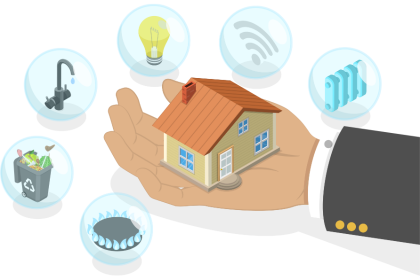
When setting up utilities in Japan, your real estate agent may handle the arrangements or recommend specific utility companies. However, some real estate agencies leave the entire process to the tenants. Make sure you start making contracts one week before you move in, as it may take time for utilities to be in service after application.
How to Make a Contract
To make utility contracts, all you need to prepare are:
- Full name
- Japan home address
- Date to start the service
- Japanese phone number
You don’t need to worry too much about the application process because most major companies allow online applications, so you can translate the online applications with website translation through Google Chrome.
Water
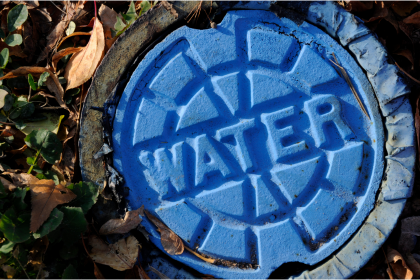
Setting up water utilities is the simplest, compared to gas and electricity. While gas and electricity are privatized and have numerous provider companies to choose from, water is not privatized. The water utility provider is fixed depending on your prefecture. Below is a list of seven prefectures’ water utility providers.
- Tokyo Waterworks Bureau
- Yokohama Waterworks Bureau
- Fukuoka Waterworks Bureau
- Osaka Waterworks Bureau
- Kyoto Waterworks Bureau
- Nagoya Waterworks Bureau
- Sapporo Waterworks Bureau
Gas & Electricity
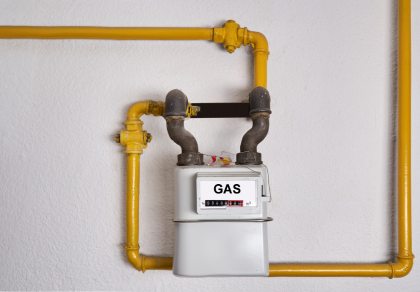
Although many companies are named “XX Gas” and “XX Electric,” regardless of their names, most companies provide both gas and electricity. In other words, you can either make two separate contracts from two companies and separate bills for gas and electricity or combine gas and electricity under one company.
Should I combine gas & electricity?
If you combine gas and electricity contracts, you often get a discount on the total amount. Additionally, it is more convenient to manage and track your expenses with just one invoice.
However, depending on your lifestyle, combining the utilities may not always be the cheapest. For example, I don’t use electricity for several months when visiting my home country during spring and summer breaks. So, I chose a provider with a cheap base rate and a relatively high energy amount rate. Consider your lifestyle and choose a gas/electricity provider.
Gas technician visit

Unlike water and electricity, when applying for gas, you’ll have to arrange a visit from a technician to activate and inspect your gas connection. Ideally, arrange it on your move-in date. Or at least in a couple of days. I had a cold shower on the first day of moving in because I had to arrange the technician’s visit for the next day. 😀
Major Gas Providers
Traditional electricity providers
More electricity providers
※Note: Although the Japanese names may seem like they are from the same company, 東京ガス(Tokyo Gas) and東京電力(Tokyo Denryoku =TEPCO) are two different providers.
Home Internet
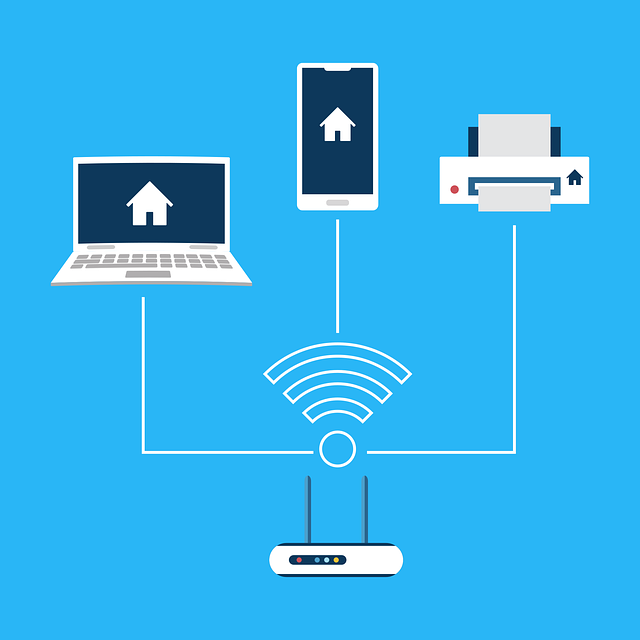
Although setting up utilities may be complicated, you don’t have to worry too much about the language barrier since most applications can be done online. What becomes complicated is setting up your home internet.
There are many internet providers, options, and plans. If you are unfamiliar with setting up home internet in Japan, check out Compare the Top 7 Internet Providers in Japan | Best Plans With English Support for detailed information!
Installing fiber internet is strongly recommended if you enjoy playing online games or watching streaming videos. However, if you want to avoid the hassle of installation or plan to stay in Japan for less than six months, a pocket WiFi may be a more convenient choice. Skip to 2. Pocket WiFi for more information about pocket WiFi!
The two most frustrating things about signing up and installing home internet are that the installation takes a few weeks and that there’s typically a 2-year binding contract, which is a burden for exchange students. Of course, the inconvenience of the language barrier during the installation is a default. If you wish to sign up at a provider that provides…
- Full English support
- No 2-year binding contract (Cancel at any time after a minimum of three months of usage)
- Pocket WiFi rental service until the internet installation construction is finished
Sakura Mobile’s home internet will be a great fit for you. It is one of the few carriers with full English support and no set contract period.
Learn about one of Japan’s fastest internet providers, NURO Hikari, and how it compares in our blog!
↑ Go back to the table of contents
How to Pay Utility Bills
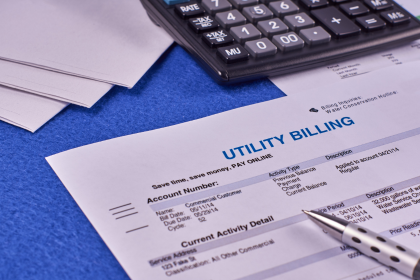
Don’t forget to pay your monthly utility bills! Surprise, welcome to adulting. For home internet, billing and payment methods can vary depending on providers. Check the homepage for details. Here, I’ll introduce the general billing and payment system of water/gas/electricity utilities.
When/How Do I Receive Bills?
A “notice of consumption” will be delivered to your mailbox.
Water: Every two months
Gas & Electricity: Every month
Convenience Store
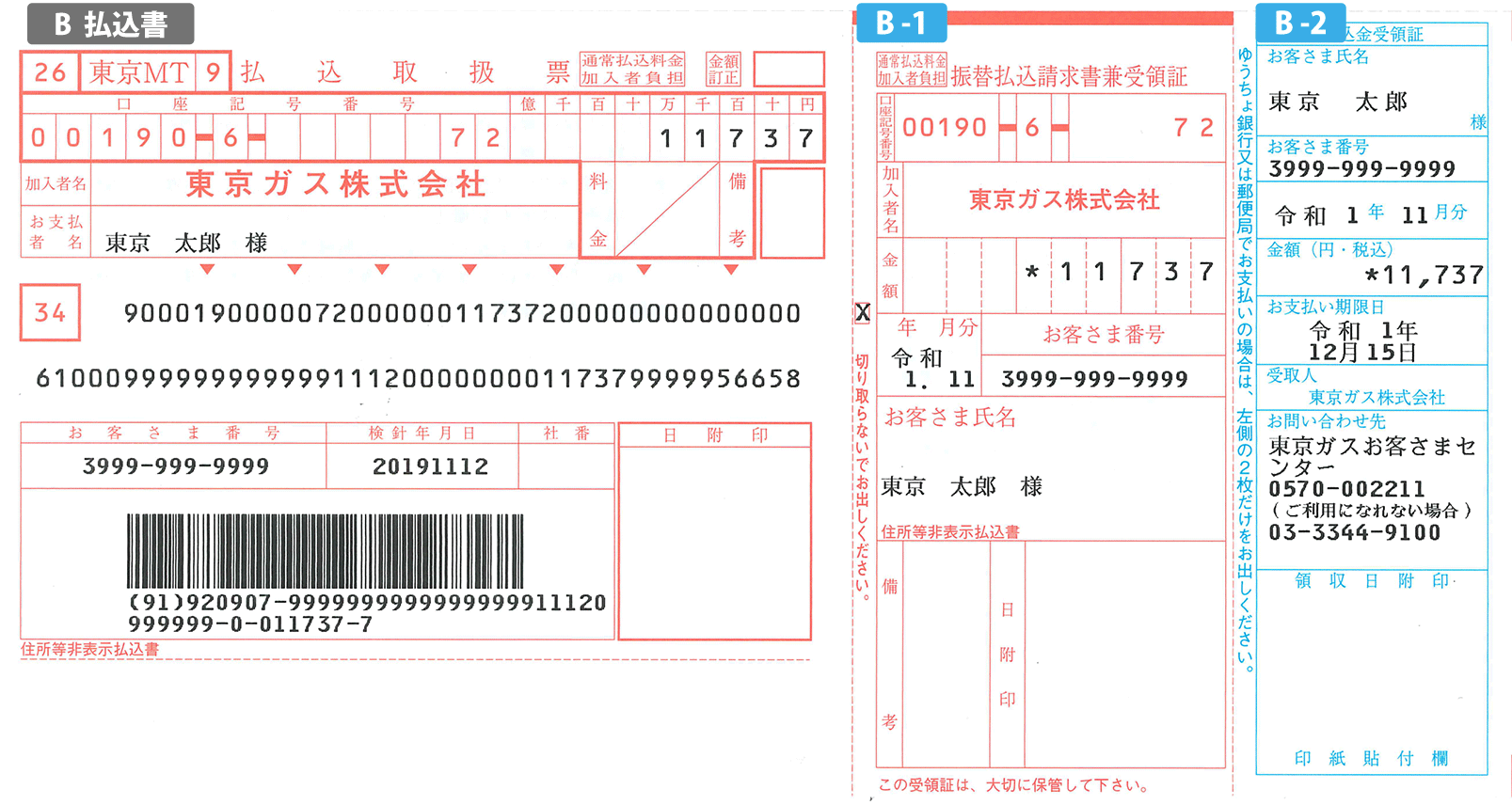
This is the simplest & easiest method until you sign up for automatic payment or credit card. Bring your bills to any convenience store and present them to the cashier. The cashier will scan the barcode on the bill and inform you of the amount due. Once you’ve paid, you’ll receive a receipt with a stamp, serving as your proof of payment. Keep this receipt in case the company needs to verify your payment.
However, you can only pay in cash. To pay with a credit card, you need to register for credit card payment with the utility company.
Pay Apps (au Pay, LINE Pay, Paypay, PayB, etc.)
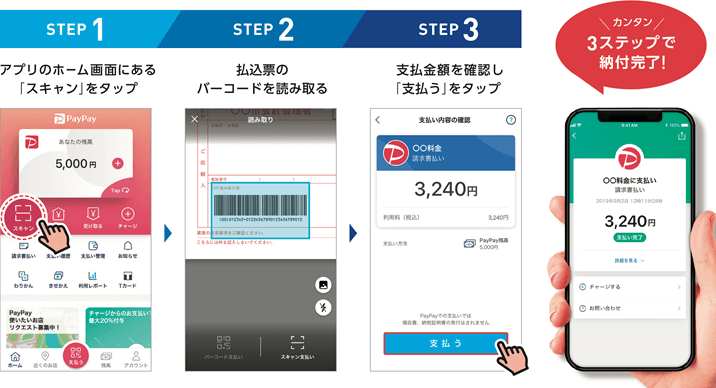
You can use mobile pay apps to pay bills for some utility companies, such as the Tokyo Metropolitan Government Bureau of Waterworks, Tokyo Gas, and TEPCO. Check if your company allows app payment.
Generally, you open the app → find “bill payment” (請求書払い) or “scan” (スキャン) → scan the bill barcode → complete payment.
Bank Transfer(口座振り込み、Kouza Furikomi)
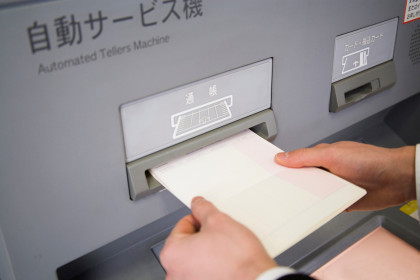
This is only possible for residents who resided in Japan for more than six months. Most banks don’t allow foreign residents to make remittances until six months. While it’s possible to make transfers at the bank, an ATM, or through internet banking, I would say it’s not the most convenient option.
Automatic withdrawal (口座振替, Kouza Furikae) & Credit Card Payment

Set up automatic payments from your bank account or credit card to avoid forgetting about paying monthly bills. You need to make an online application or send a paper application form. After the application, the automatic payment takes a few days~ a month to start. Until then, use an alternative payment method mentioned above.
Which is cheaper?
Automatic bank payment: Some utility companies offer a 50~55 JPY discount for each payment.
Credit card payment: The merit is that the higher your bill is, the more credit card points you get.
However, if your bill is under 10,000 JPY, having a fixed discount through automatic bank payment might be better.
↑ Go back to the table of contents
2. Home Internet
As briefly mentioned above, there are two options for home Internet: Fiber Internet and pocket WiFi. Here’s all the explanation needed for those who are not sure what to choose.
Before we dive into it, in general, as you’re a post-COVID study abroad student, I recommend you go for fiber internet for two reasons:
- As you know, the proportion of online university classes has increased since the pandemic.
- There are hardly any 24-hour libraries or cafes in Japan, so you will often need to do your assignments at home if you’re a night person.
Top 7 Home Internet Providers in Japan with English Support
Option 1: Fiber Internet
What is Fiber Internet?
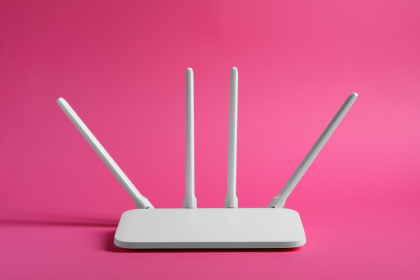
Fiber internet utilizes fiber-optic lines directly connected to your house or apartment. As the lines need to be installed in your place, getting the connection working could take a few weeks. It offers exceptionally high speeds, typically ranging from 100 to 700 Mbps in actual usage. Moreover, fiber internet does not impose data limits, allowing users to enjoy unlimited data without concerns about caps. Although we compared fiber internet to pocket WiFi by calling it “wired internet,” you can still use it wirelessly within your home by connecting it to a WiFi router.
Fiber Internet is recommended if…
- You want the fastest internet speed
- You want unlimited data
- You play online games/ join online meetings
- Your period of stay is over three months
Option 2: Pocket WiFi
What is Pocket WiFi?
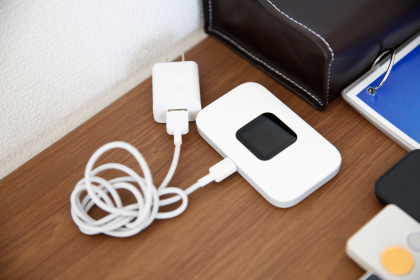
While the term “pocket WiFi” is commonly used in Japan, you may have heard of it as “portable WiFi.” Pocket WiFi relies on a mobile network, resulting in slower speeds than fiber internet. Additionally, it has data caps, causing the connection to slow down once you exceed the allotted data. However, you can carry the pocket WiFi device outside the house and use it on the go.
Pocket WiFi is recommended if…
- You want to connect to the internet even outside of the house
- You want the cheapest internet
- You don’t want any fiber installation at your place
- Your period of stay is under three months
↑ Go back to the table of contents
Check out our blog below for information about the best long-term pocket WiFi in Japan for 2024!
Best Long-Term Pocket WiFi in Japan 2024
3. Conclusion
- Water: Apply for your prefecture’s waterworks provider. Pay the bill every 2 months.
- Gas, electricity: Choose one company or two companies from numerous options. Pay the bill every month.
- Home internet: Decide either fiber internet or pocket WiFi, depending on your lifestyle and period of stay. Pay the bill every month.
- Recommended bill payment: Convenience store payment (first month) → Automatic withdrawal OR credit card payment (after you make your account and/or credit card)
I hope this guide has helped set up your utilities! While you might have sorted out the basics, if you’re still struggling with internet setup due to the overwhelming number of providers and your lack of confidence in Japanese, Sakura Mobile will offer you freedom from the three biggest stresses of internet connection:
- Freedom from the language barrier.
- Freedom from a long-term contract.
- Freedom from waiting for the internet installation through pocket WiFi rental service
Doesn’t it feel crazy to suddenly face setting up and paying for utilities in a foreign country while still feeling like a kid? I mean, they never taught us about this in school ☹️ However, don’t worry! Sakura Mobile will support your new life in Japan through this series and, of course, through a stable internet connection!
In the next article, I’ll introduce where and how to buy furniture for your apartment! See you next time 😄
(Part 1) Before Leaving: What should I pack and prepare?
(Part 2) Upon Arriving: What to Get Done at the Airport
(Part 3) After Arrival: 4 Important Procedures to Get Done Right Away
↑ Go back to the table of contents


